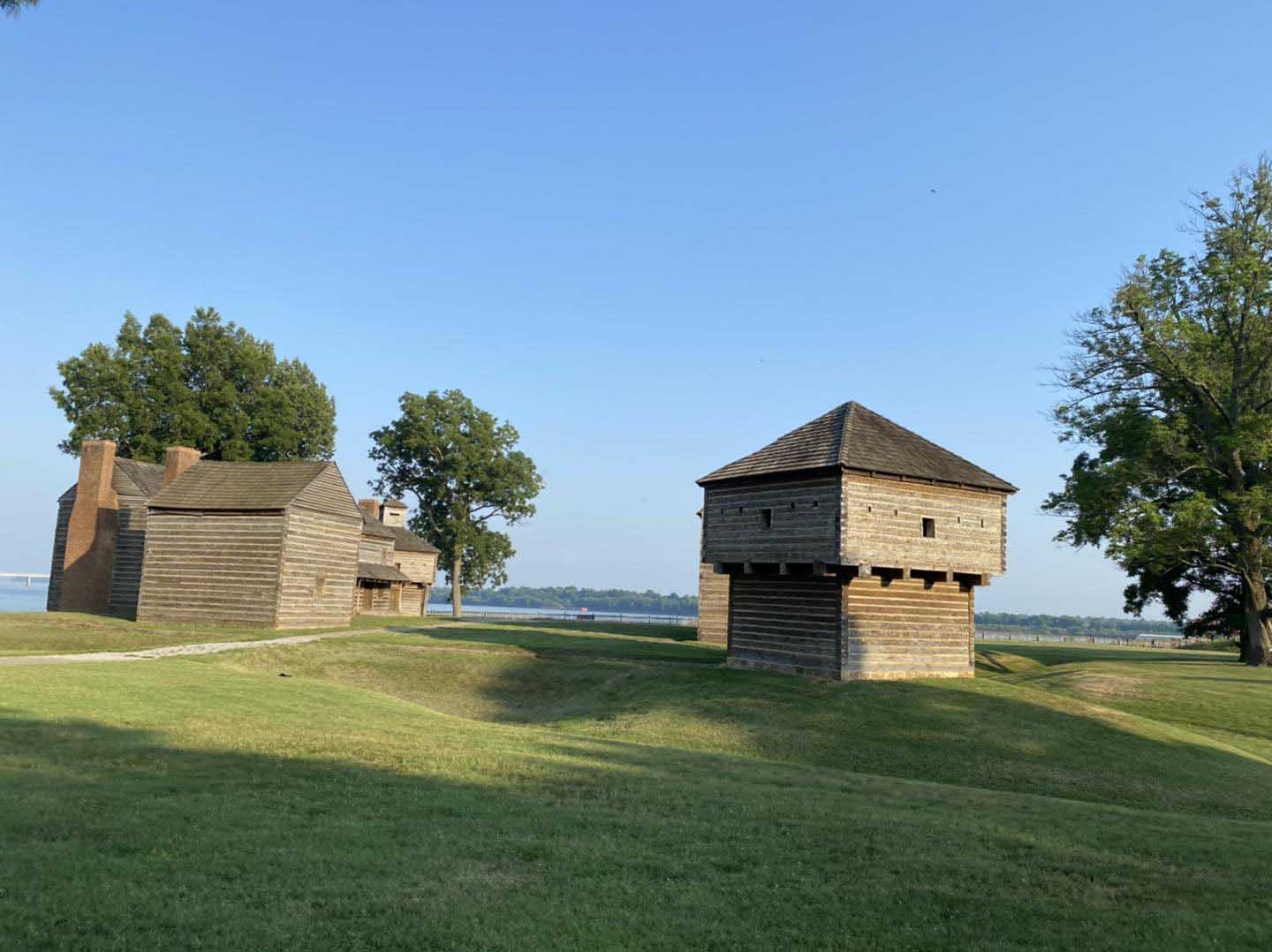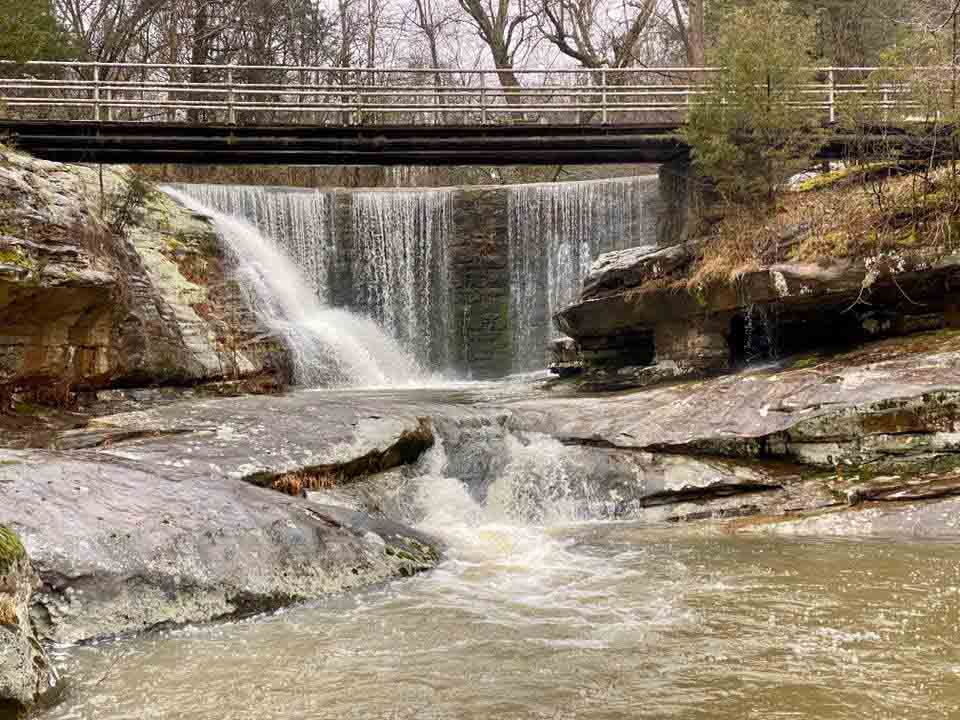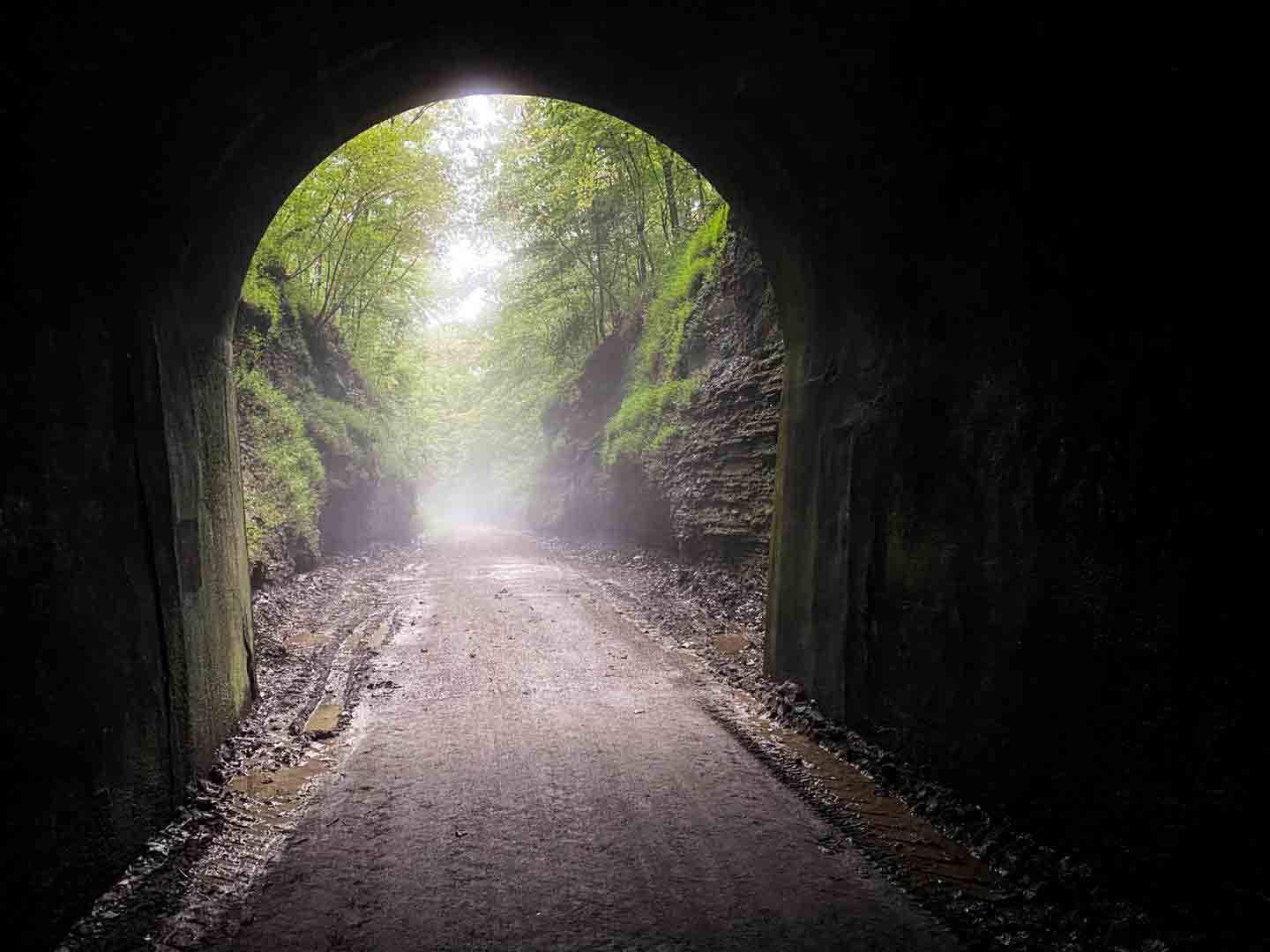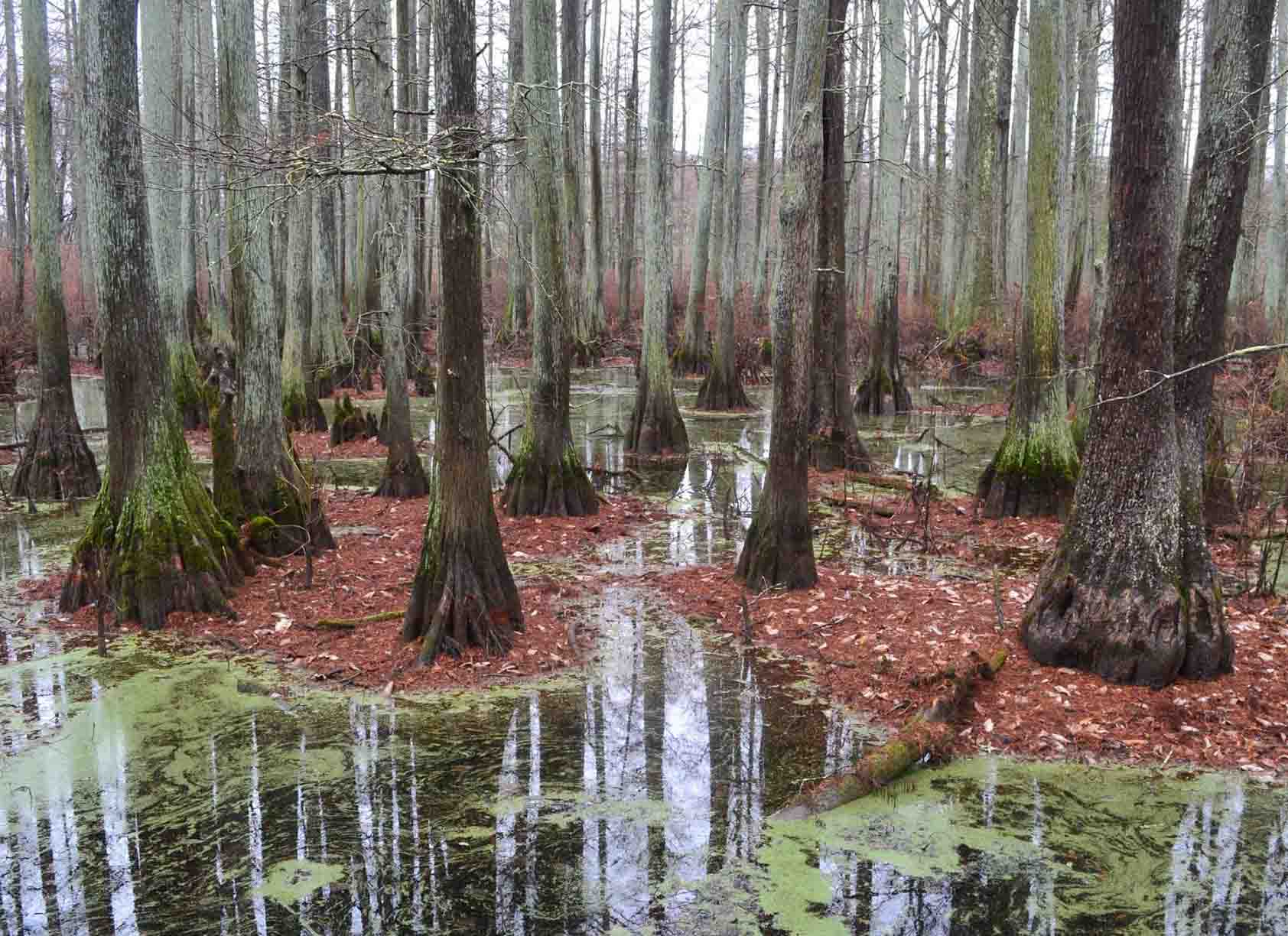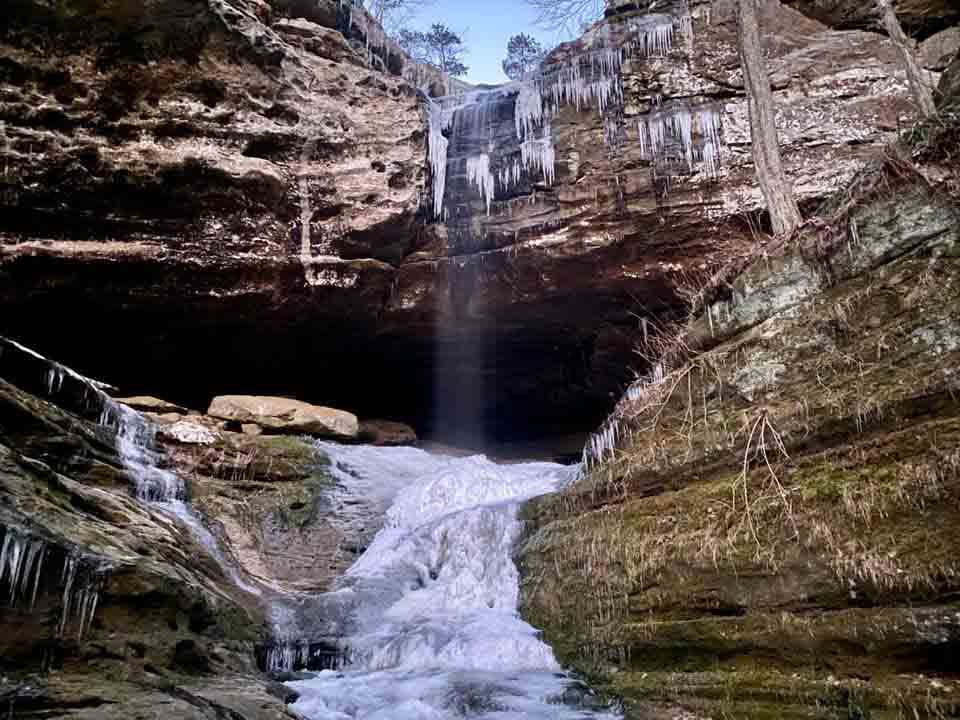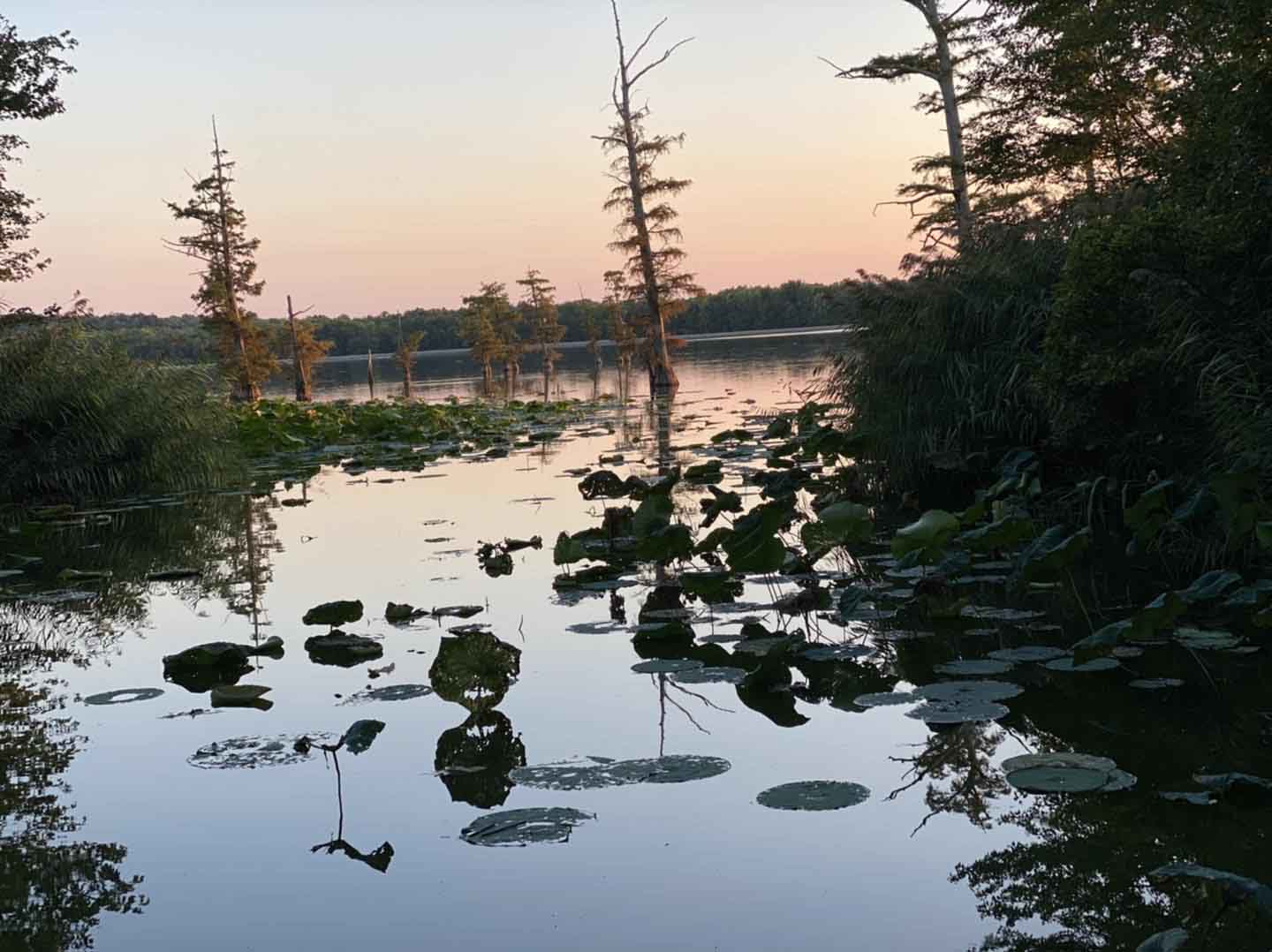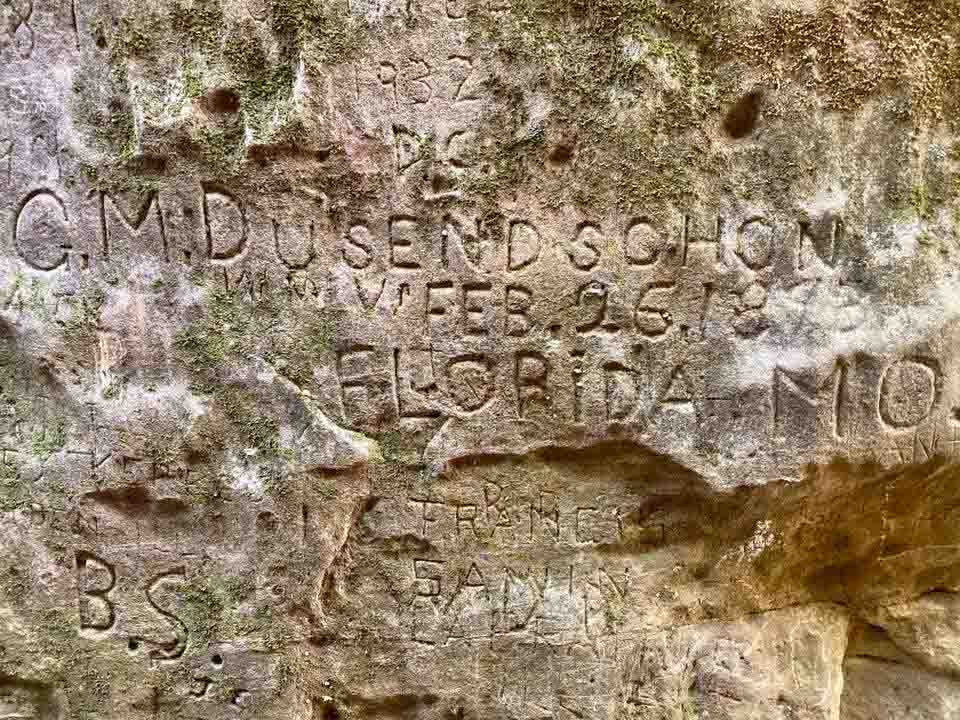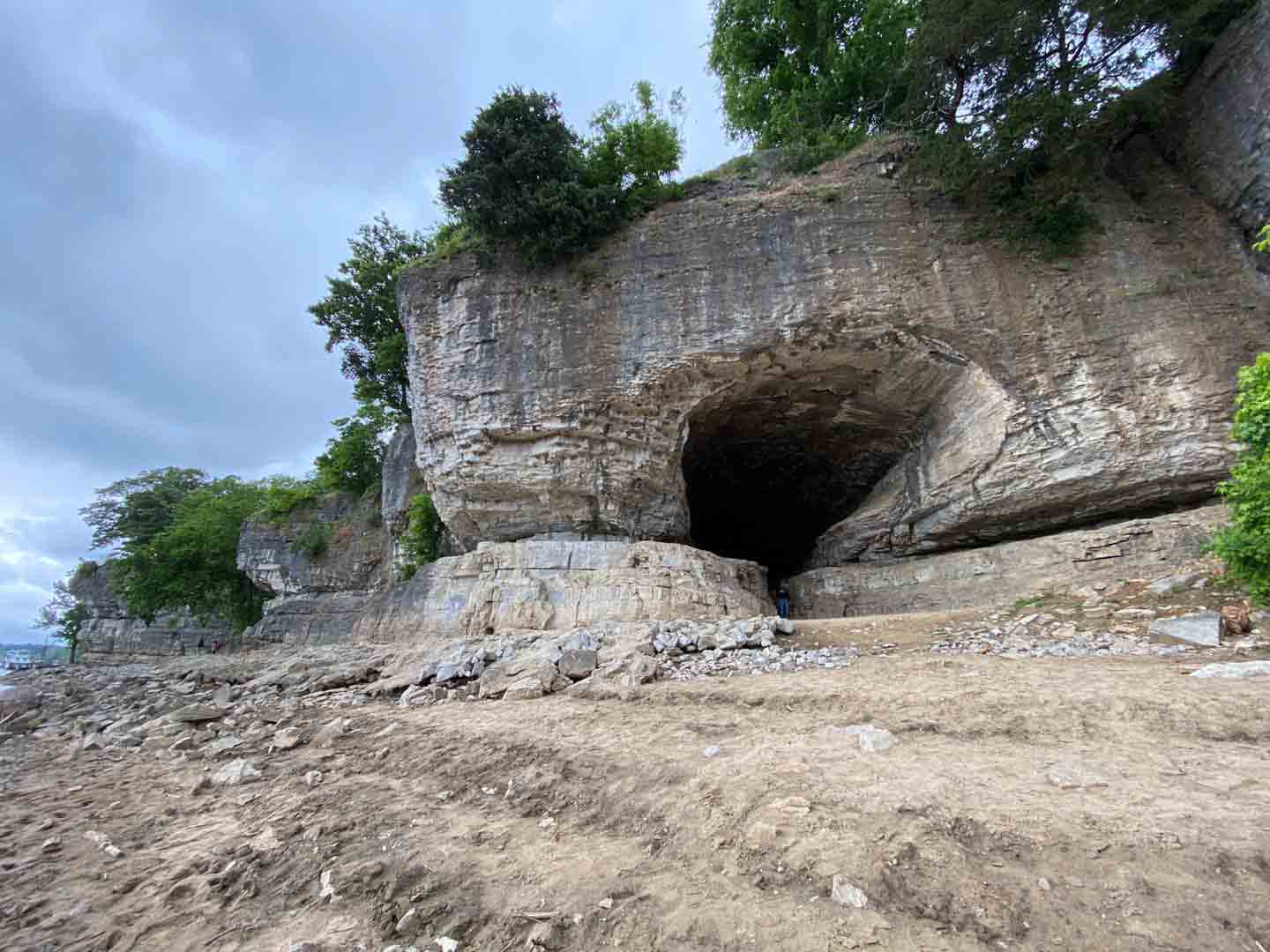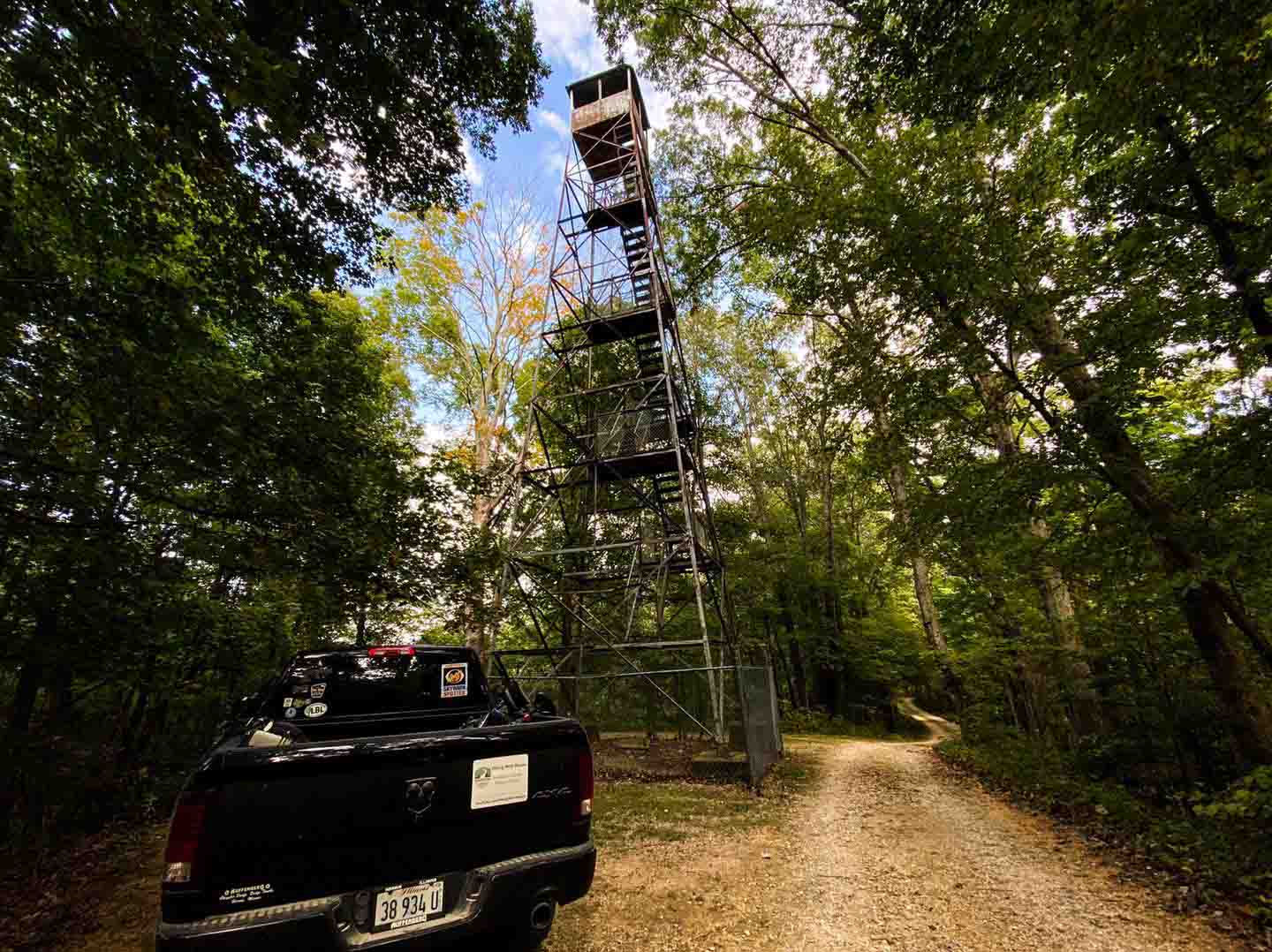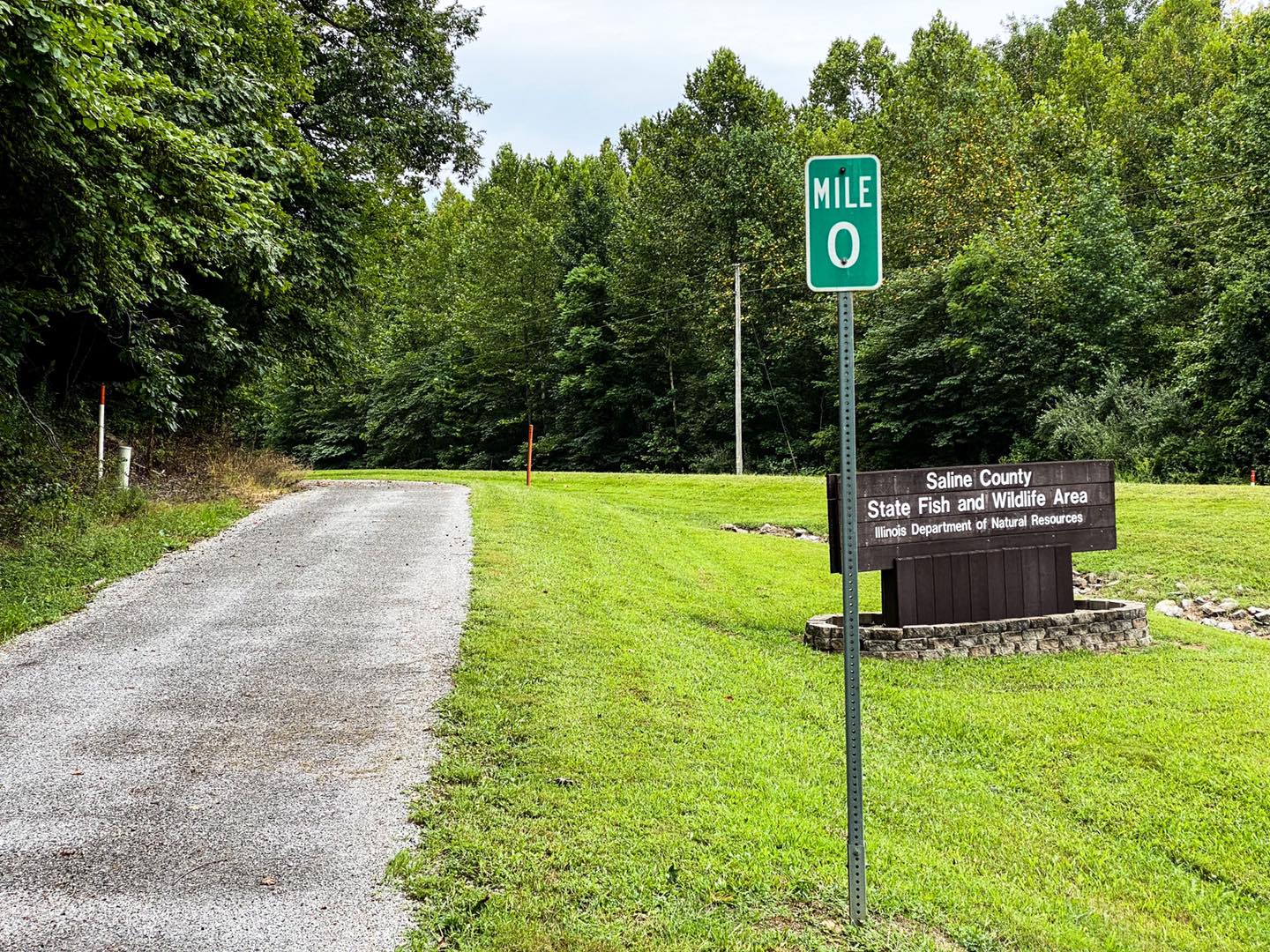10 of the Best Illinois State Parks in Southern Illinois
Some of the best Illinois State Parks are obviously located in the southern portion of the state.
The Shawnee National Forest surrounds Southern Illinois. There are more natural features in southernmost Illinois than in any other part of the state. It’s also closest to the confluence of two major US rivers, the Ohio and the Mississippi.
The rest of the state definitely has some great state parks, but Southern Illinois state parks are even grander because of everything you get to enjoy in between visiting each one.
Here’ 10 of the best Illinois State Parks located in the southern part of the state which we locals call, Southern Illinois.
Best Illinois State Parks to Visit
Let’s take a look at 10 of the best Illinois State Parks to visit for hiking, biking, camping, and other outdoor recreation adventures.
1 – Fort Massac State Park in Metropolis, Illinois
Fort Massac State Park is located at the very bottom of the state of Illinois in Metropolis, Illinois.
This is one of the best Illinois State Parks because it is the first Illinois State Park. The first state park in Illinois definitely deserves a spot on this list.
Fort Massac State Park is very historical. Some experts claim that the Spanish first built the fort in the 1500s. The fort was used during the American Revolution and was even a stop for the Lewis and Clark expedition.
Today, only a replica of the fort exists. The original location of the fort has been outlined, and you can walk the grounds to see what it looks like.
The State Park hosts an annual encampment and reenactment every year that offers entertainment, souvenirs, and food.
A visitors center in the park features historical information, merchandise, one of the largest collections of arrowheads in the region, and seasonal programs and events.
The park has a rail trail for biking, numerous walking paths, picnic areas, and ponds for fishing. There are remote sections of the park that allow hunting. There is also boat access to the Ohio River.
The park also features a fully electrical (and primitive) campground with a shower house.
For more information about Fort Massac State Park, check out my free online guide for the park.
2 – Dixon Springs State Park in Golconda, Illinois
Dixon Springs State Park is located in rural Golconda of Pope County, Illinois.
This had to be added to the best Illinois State Parks list because of all the interesting things this park has to offer to outdoor recreation enthusiasts. The park looks small, but there is a lot to do in it.
Dixon Springs is a historical site. Native Americans occupied the area and called it Great Medicine Waters because of its multiple natural springs. A town was created in 1848 called Dixon Springs. It had several churches, a post office, and more. A few of the historic churches had to be torn down recently due to the danger they posed because of their condition. Before the State Park was formed, the site was a health spa where patrons used the springs.
The springs have since been covered up, but you can still find their locations throughout the park. There are many historical remains throughout the park including old walls, stairs, and even foundations in some of the more remote areas of the park.
There is a lot to do in the park. It features camping for both electric and primitive campers. There are numerous hiking and mountain biking trails. There are waterfalls throughout the park.
A seasonal public swimming pool is also located at the park.
For more information about this state park, visit my free online guide for Dixon Springs State Park.
3 – Tunnel Hill State Trail in Vienna, Illinois
Tunnel Hill State Trail is a 50+ mile rail trail that stretches from Karnak to Harrisburg, Illinois, and passes through several different communities, ghost towns, and counties.
Tunnel Hill State Trail is one of the best Illinois State Parks because it’s the largest rail trail in the state of Illinois. This railroad track system was converted into a bicycling and walking path. The headquarters for the trail is located at Vienna City Park in Vienna, Illinois.
There is a lot of history along this bike trail. The trail was first a railway created after the Civil War era. It was used to send fruits, vegetables, salt, coal, and even passengers to other locations the tracks connected to. The railways changed hands of many different railroad companies throughout the years. The last railroad company to use the tracks was Norfolk Southern. In the early 90s, the right-of-way was given to the State of Illinois, and the Tunnel Hill State Trail was created for cycling, hiking, and walking. Today, it’s used by many cyclists all over the world and even hosts an annual running event that is a Boston Marathon and Olympics qualifier.
The trail is mainly made up of crushed limestone and gravel. There are numerous trailheads featuring bike racks, drinking water, and vault toilets.
Trail users will notice many former railroad structures along the trail and pass through several ghost towns where some foundations and structures still exist.
Aside from the many trestles that you pass over, one of the main features is the 500+ foot tunnel that you pass through near the village of Tunnel Hill, which gave the trail its name. You should consider turning on your bike light in the tunnel, as the middle will give you complete tunnel vision.
For more information about this trail, check out my free online Tunnel Hill State Trail guide.
4 – Cache River State Natural Area in Cypress, Illinois
Cache River State Natural Area is located in Cypress, Illinois, and stretches through multiple counties. The area is managed by both the Illinois Department of Natural Resources and some sections by the US Fish and Wildlife Refuge system.
This was added to the best Illinois State Parks list because of all the unique nature features the area has to offer. Most of it contains swampland formed around the Cache River. The swampland looks as if it comes from the southern bayou, featuring cypress trees, duckweed-covered ponds, and an abundance of swamp life. The best part is that it’s completely natural and was once how much of the area looked like before European settlers destroyed most of it.
Cache River State Natural Area is both people-based and naturally historical. In the days of Christopher Columbus, the area was a blackwater swamp of ancient trees. Massive cypress trees covered the area and were over 1,000 years old. Some of those trees still exist and can be visited along hiking and paddling trails. Settlers in the area eventually destroyed the majority of the swampland in order to create their communities and make money. Concerned citizens eventually came together to save many parts of the area and formed what is now known as the Cache River State Natural Area.
Today, outdoor recreation enthusiasts can enjoy countless hiking trails, canoe and kayak routes, and many birding and wildlife-watching opportunities. There are also plenty of hunting and fishing opportunities available in the area.
For more information about this area, visit my free online guide for Cache River State Natural Area.
5 – Ferne Clyffe State Park in Goreville, Illinois
Ferne Clyffe State Park is one of the best Illinois State Parks located in Goreville, Illinois, in rural Johnson County.
Ferne Clyffe State Park features amazing bluffs, numerous hiking trails, and some of the best waterfalls in Johnson County. It’s a hidden gem in plain sight and a favorite among locals and travelers alike.
Ferne Clyffe State Park definitely has a cool history. George Rogers Clark passed through the area in 1778 while making his way to Fort Kaskaskia. It has been said that the Cherokee used the area for hunting while moving along the Trail of Tears towards Oklahoma Reservations. In 1899, two brothers from Cario, Illinois, purchased the area of Big Rocky Hollow and Hawk’s Cave. The name Ferne Clyffe came to be because of the large amount of ferns that grow (and still grow) in the area. The land was eventually sold to famous schoolteacher Emma Rebman, who preserved it like a park and eventually left it to the state to make it into a public space. The old entrance of the park was closed, resulting in major protests and even arrests because the people of Goreville felt a new road would take the park away from being a Goreville staple.
Today, Ferne Clyffe State Park is visited by hundreds of thousands of people every year. The park has multiple onsite and remote hiking trails. There are nearly 100 routes for rock climbers. When wet, the area has numerous waterfalls of all different sizes. There are electrical campsites and primitive campsites in its scenic campground.
For more information about Ferne Clyffe State Park, see my free online guide for the area.
6 – Mermet Lake State Natural Area in Belknap, Illinois
Mermet Lake State Natural Area is a lake located between Metropolis and Belknap, Illinois.
Mermet Lake features over 690 acres of water. Most of the lake is a swampland environment with cypress trees growing within it.
The history of the lake started in the 1960s when it was created. It was created through a system of levees. It is a major source of water and serves as a significant site for duck hunters each year. They will flood the area, and permanent blinds are there for hunters, who are the only ones allowed to visit the site during the hunting season.
Aside from the hunting benefits that the area has to offer, it is always a local favorite among fishermen. You can fish from the lake shore or by boat. It is a no-wake lake and also great for kayaking. There are numerous cypress trees in the lake where you can spot wildlife such as herons, egrets, and even bald eagles. The area is also popular among herping communities for spotting snakes of all kinds, including the cottonmouth and the mud snake.
The site offers a 5-mile one-way, mainly gravel drive around the lake. This is perfect for nature viewing and even gravel biking. There are numerous hiking trails in the area, too. The lake offers parking, boat ramp access, and vault toilets.
For more information about this site, visit my free online guide for Mermet Lake State Natural Area.
7 – Giant City State Park in Makanda, Illinois
Giant City State Park is definitely one of the best Illinois State Parks in the area. This park is located in the Village of Makanda near Carbondale, Illinois.
Giant City State Park, in my opinion, is probably the overall best state park in the State of Illinois. It offers so much in many different ways. There is something to do for just about everyone at Giant City State Park.
This history of Giant City State Park is beyond cool. The park’s property is littered with carvings from passersby from the 1800s, including the Civil War. You can see the carvings along the Nature Trail in an area nicknamed the Giant City Streets. In the 1930s, the creation of the park began. The Civilian Conservation Corps (CCC) created the park. The CCC built the roads within the park, the hiking trails, the drainage systems, and even constructed the lodge, which is still used today.
The park offers many seasonal programs and events throughout the year. Users can enjoy numerous hiking trails, a backpacking trail, a campground, a horse stable and trails, ADA and forest bathing trails, picnicking shelters created by the CCC, cabins, and a CCC-built lodge, with some of the best-fried chicken in the region. It even has a great road system that is good for road biking.
For more information about the area, check out my free online guide for Giant City State Park.
8 – Cave-in-Rock State Park in Cave-in-Rock, Illinois
Cave-in-Rock State Park is located in the Village of Cave-in-Rock, Illinois.
Cave-in-Rock is one of the best Illinois State Parks because it’s one of the most unique state parks around. It features an interesting cave shelter that has an infamous history. This state park is located right on the Ohio River.
As I said, Cave-in-Rock State Park has an infamous history. It is obviously known to most that Native Americans would have used the cave for thousands of years before settlers arrived in North America. Once settlers did arrive, during the 1790s, the cave was used by river travelers arriving on flatboats. It was an inn, a tavern, and a brothel at one time. It was a hideout for a gang of murderous river pirates, including Samual Mason and Jesse James. Today, users can view ancient graffiti on the ceiling of the cave that was put on when flood waters were up.
The cave is actually a natural shelter, not really an actual cave, but it’s a deep shelter, making it a cave-like environment. It stands right next to the Ohio River. During river flooding, even minor flooding, the cave cannot be accessed by foot. When not flooded, hikers can use a trail and stairs to get down to the cave.
The park also offers many scenic overlooks of the Ohio River, numerous other hiking trails, a campground, cabin rentals, and a lodge with great food. There are also vault toilets, parking lots, and picnic shelters available.
For more information about this park, visit my free online guide for Cave-in-Rock.
9 – Trail of Tears State Forest in Jonesboro, Illinois
Trail of Tears State Forest is a state-managed forest located in Jonesboro, Illinois.
This state forest offers many benefits for its users. It includes a nature preserve, a hiking trail, and more. The creek beds look like something out of the Missouri Ozarks.
The history of the state forest is also very unique. There is a unique natural history of the area that makes it seem like it’s part of the Missouri Ozarks rather than southern Illinois. However, the Ozarks natural region does come slightly through this area in southern Illinois. Native Americans widely used the area before settlement was made in the region by Europeans. During the 1930s, the CCC created much of what the forest resembles today.
Today the state forest is made up of many recreation activities available for users interested. There is a state-managed nursery that reserves average for annual tree growth. There are miles of hiking and horseback riding trails. There are non-electric campsites along two sections of roads within the forest. Some of the campsites offer AT-like shelters. It’s my favorite campground in Southern Illinois. There is even a fully erected fire tower, but unfortunately, you can’t legally climb it.
For more information about this area, visit this free online guide for Trail of Tears State Forest.
10 – Glen O Jones State Fish and Wildlife Area in Equality, Illinois
Glen O Jones, or Saline County State Fish and Wildlife Area, is located in rural Saline County, Equality, Illinois.
Glen O Jones Lake is more than just a lake for fishing. It is an entire recreation area for just about every outdoor recreation user. There is something for everyone at Glen O Jones Lake.
The area is host to salt springs, which gave the county its name, Saline. The salt springs once belonged to Native Americans, and after settlers forced them from their land and relocated them to reservations, the United States Government took possession of the springs. They would lease springs to private citizens but not make them part of the public domain. The lake was named after a Saline County citizen who served in the Illinois General Assembly, Glen O Jones.
The lake is now a recreation area for many different types of users. It is a no-wake lake for small boats and kayakers. There are non-electric campsites scattered around the lake, with many offering lakefront sites where you can launch your kayak right from your site. There is a bike trail and numerous hiking trails. A statue of Tecumseh (Shawnee Native American Chief) with some historical signage is also present.
To learn more about Glen O Jones Lake, visit my free online guide for the area.
Final Thoughts About the Best Illinois State Parks
Some of the best Illinois State Parks are located right here in Southern Illinois. As you can tell from my list above, we have a lot of great state parks in Southern Illinois. This list is definitely not extensive. There are numerous other state parks and areas in the region worth visiting. But it definitely starts with you. Get out there, find your park, and enjoy what Illinois State Parks have to offer.
Thank you for reading my article. If you enjoyed it, please share this article with others. You can give me a one-time donation or a monthly donation if you’d like to support me for writing these free articles. Donating is never obligated but definitely well appreciated.
Be sure to subscribe to my free monthly newsletter for more hiking tips and resources.
And until next time, I’ll see you on the trail!
Please Support Hiking with Shawn
Alrighty folks, I hope you have enjoyed this content. I provide it for free and it takes a while to create. If you would be so kind enough to support my efforts, you can do so by sharing this post with others, especially on social media. Be sure to subscribe to my YouTube Channel to see my latest videos, shorts and live streams. Follow me on Facebook, Instagram, Twitter and TikTok for unique content that you will only find on those pages. You might also join my Southern Illinois Hiking & Outdoor Resources Group on Facebook, too!
You can also support me by becoming a Patreon Supporter for as little as $3/month and you can cancel anytime (no contracts or catches). Patreons get access to extra features, exclusive articles, sticker packs, gifts and more. Consider buying official Hiking with Shawn Merchandise as another way to support me. I spend a lot of money on Hiking with Shawn and because of extremely high public land permit fees, I make very little money in return so everything helps.
Thanks again for checking out another one of my articles and until next time, I’ll see you on the trail!
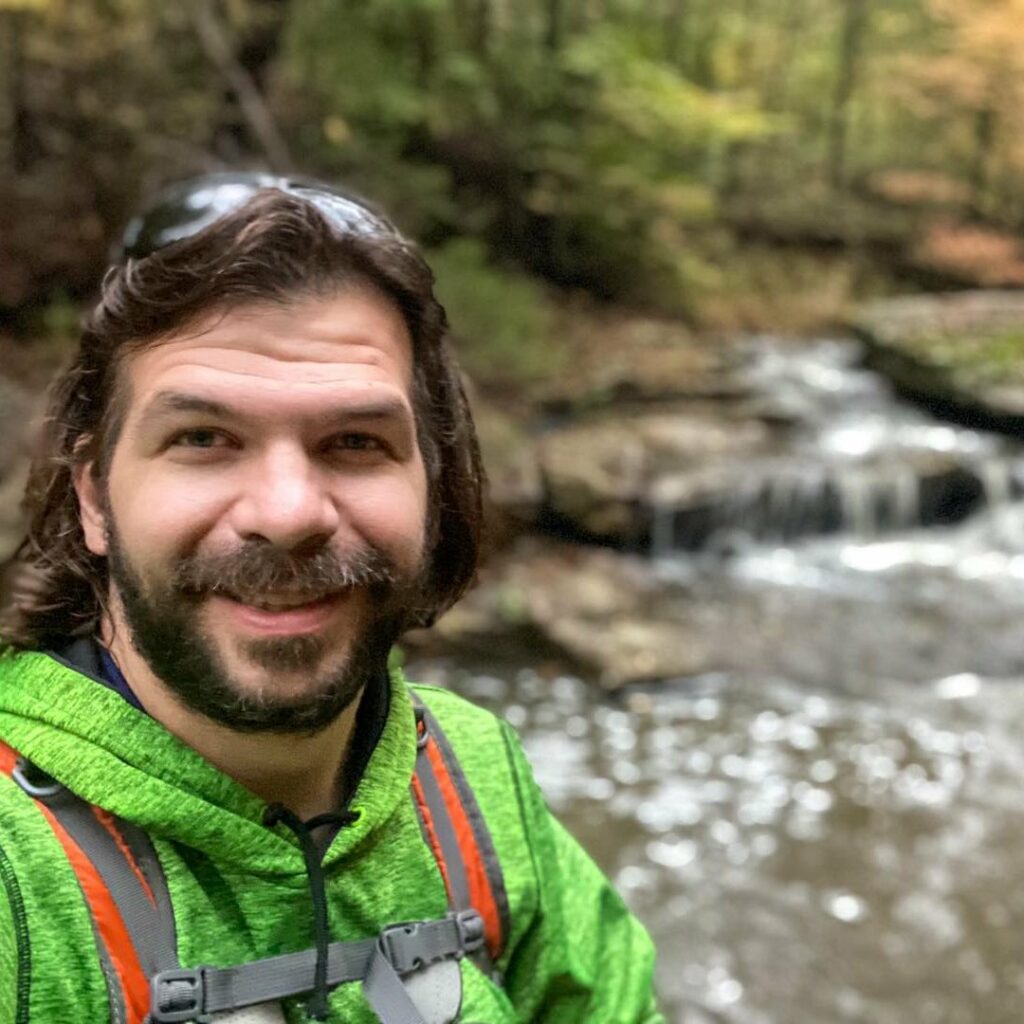
Shawn Gossman
Founder, Hiking with Shawn
Howdy folks! My name is Shawn Gossman and I founded Hiking with Shawn. I’m an avid hiker, cyclist and outdoorsman here in the Shawnee National Forest. I was born and raised in Southern Illinois and never want to leave. Click here to learn more about Shawn Gossman

